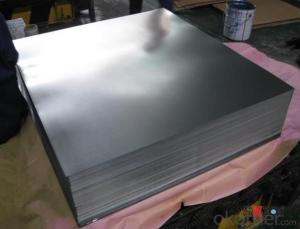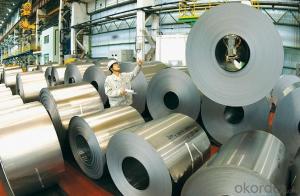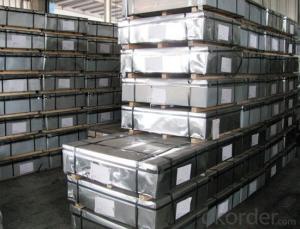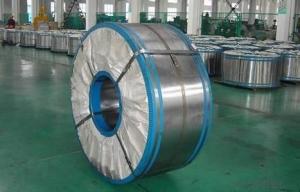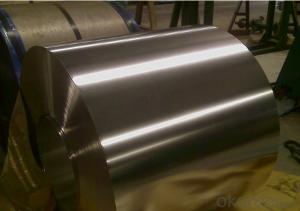Tinplate Coils / Sheet for Foods Can Packaging
- Loading Port:
- Tianjin
- Payment Terms:
- TT OR LC
- Min Order Qty:
- 25 m.t
- Supply Capability:
- 7000 m.t/month
OKorder Service Pledge
OKorder Financial Service
You Might Also Like
1.Structure of Electrolytic Tin Plate Coils and Sheets for Foods Metal Packaging Description
Electrolytic Tin Plate Coils and Sheets for Foods Metal Packaging, is one thin steel sheet with a coating of tin applied by electrolytic deposition. Tinplate made by this process is essentially a sandwich in which the central core is strip steel. This core is cleaned in a pickling solution and then fed through tanks containing electrolyte, where tin is deposited on both sides. As the strip passes between high-frequency electric induction coils, it is heated so that the tin coating melts and flows to form a lustrous coat.
2.Main Features of the Electrolytic Tin Plate Coils and Sheets for Foods Metal Packaging
Appearance – Electrolytic Tin Plate is characterized by its beautiful metallic luster. Products with various kinds of surface roughness are produced by selecting the surface finish of the substrate steel sheet.
Paintability and printability – Electrolytic Tin Plates have excellent paintability and printability. Printing is beautifully finished using various lacquers and inks.
Formability and strength – Electrolytic Tin Plates have got very good formability and strength. By selecting a proper temper grade, appropriate formability is obtained for different applications as well as the required strength after forming.
Corrosion resistance – Tinplate has got good corrosion resistance. By selecting a proper coating weight, appropriate corrosion resistance is obtained against container contents. Coated items should meet 24 hour 5 % salt spray requirement.
Solderability and weldability – Electrolytic Tin Plates can be joined both by soldering or welding. These properties of tinplate are used for making various types of cans.
Hygienic – Tin coating provides good and non toxic barrier properties to protect food products from impurities, bacteria, moisture, light and odours.
Safe – Tinplate being low weight and high strength makes food cans easy to ship and transport.
Eco friendly – Tinplate offers 100 % recyclability.
Tin is not good for low temperature applications since it changes structure and loses adhesion when exposed to temperatures below – 40 deg C.
3.Electrolytic Tin Plate Coils and Sheets for Foods Metal Packaging Images

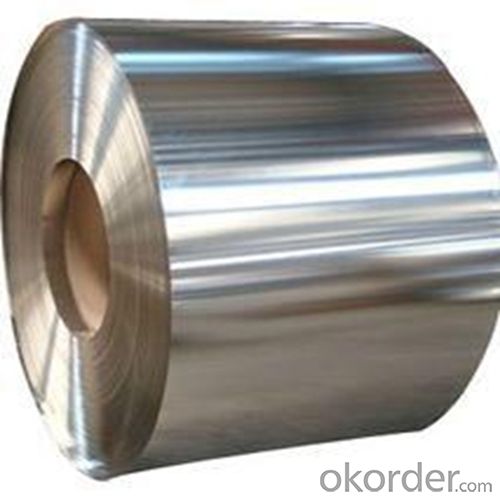
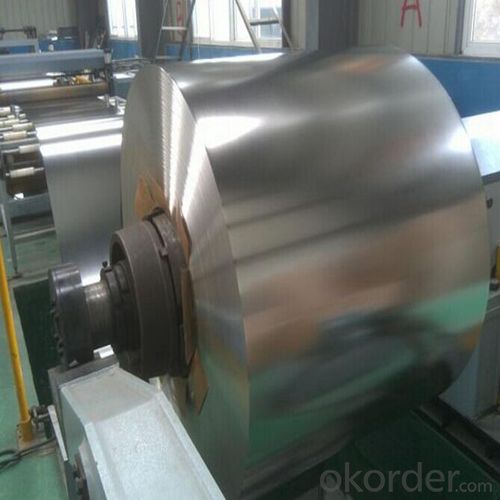
4.Electrolytic Tin Plate Coils and Sheets for Foods Metal Packaging Specification
Standard | ISO 11949 -1995, GB/T2520-2000,JIS G3303,ASTM A623, BS EN 10202
|
Material | MR,SPCC |
Thickness | 0.15mm - 0.50mm |
Width | 600mm -1150mm |
Temper | T1-T5 |
Annealing | BA & CA |
Coil Inner Diameter | 508mm |
Weight | 6-10 tons/coil 1~1.7 tons/sheets bundle |
Passivation | 311 |
Oil | DOS |
Surface | Finish,bright,stone,matte,silver |
5.FAQ of Electrolytic Tin Plate Coils and Sheets for Foods Metal Packaging
-What your tinplate material is used for ?
Tinplate is widely used for the packaging of products. Such as food cans,
beverage cans, pet cans, closures, general line cans and so on.
Printed Tinplate is offered!!
-How to place .an order or contact you ?
Please send us Email. we will give you a quick response in seconds .
- How is your quality ?
All our quality is prime even the secondary quality . We have many years experience
In this field with serious quality control standard . Advanced equipment, We welcome your visit to our factory .
- Q: How does tinplate packaging contribute to product protection against breakage?
- Tinplate packaging contributes to product protection against breakage by providing a strong and durable barrier that can withstand external pressure and impact. The rigid nature of tinplate makes it resistant to deformation and ensures that the packaged product remains intact and secure during transportation and handling. Additionally, tinplate packaging offers excellent resistance to moisture, corrosion, and temperature changes, further safeguarding the product from damage.
- Q: How does tinplate compare to plastic in terms of durability?
- Tinplate generally offers better durability compared to plastic. It is a sturdy material that can withstand external pressures and resist dents or breakage. Additionally, tinplate is less prone to cracking or warping over time, offering a longer lifespan for products made from it. On the other hand, plastic can be more prone to scratches, cracks, and degradation over time, making it less durable than tinplate.
- Q: How does tinplate affect the recyclability of mixed-material packaging?
- Tinplate can significantly improve the recyclability of mixed-material packaging. It provides a protective layer that prevents contact between different materials, reducing contamination and making the separation process easier during recycling. Additionally, tinplate is highly recyclable itself, meaning it can be efficiently processed and reused, further enhancing the overall recyclability of mixed-material packaging.
- Q: How does tinplate contribute to the preservation of aerosol products?
- Tinplate contributes to the preservation of aerosol products by providing a durable and protective container that helps prevent the penetration of moisture, air, and light which can degrade the quality and effectiveness of the product. Additionally, tinplate containers are resistant to corrosion, ensuring the longevity and integrity of aerosol products.
- Q: Soup with tin cans loaded also need high temperature sterilization?
- Recently, the new provisions of the food industry has been introduced, did not look carefully, it seems that there is no preservative food should be high temperature sterilization.From the point of view of food safety, sterilization is also beneficial. You know that.
- Q: Can tinplate be used for packaging of perishable goods?
- Yes, tinplate can be used for packaging of perishable goods. Tinplate is a type of steel coated with a thin layer of tin, which provides excellent barrier properties against moisture, light, and oxygen. This helps to preserve the freshness and quality of perishable goods by preventing spoilage and extending the shelf life. Additionally, tinplate is also resistant to corrosion, making it suitable for packaging perishable items that may release moisture or acidic substances.
- Q: How is tinplate affected by humidity?
- Tinplate is highly susceptible to corrosion, and therefore, humidity has a significant impact on it. Moisture in the air can cause tinplate to rust and deteriorate more quickly.
- Q: How does tinplate packaging contribute to brand recognition?
- Tinplate packaging contributes to brand recognition by providing a visually appealing and distinctive packaging solution. The shiny and durable nature of tinplate grabs consumers' attention and helps to differentiate the brand from competitors. Additionally, tinplate packaging can be customized with vibrant colors, intricate designs, and embossing techniques, which further enhances brand visibility and memorability. The premium look and feel of tinplate packaging also conveys a sense of quality and value, positively influencing consumers' perception of the brand.
- Q: How does tinplate affect the overall weight of packaging?
- Tinplate has a significant impact on the overall weight of packaging as it is a lightweight material. It allows for the production of durable and sturdy packaging solutions while maintaining minimal weight, resulting in reduced transportation costs and environmental impact.
- Q: What are the environmental impacts of using tinplate?
- The environmental impacts of using tinplate include deforestation due to the extraction of tin ore, air and water pollution from mining and smelting processes, and the release of greenhouse gases during production. Additionally, the disposal of tinplate products can contribute to landfill waste.
Send your message to us
Tinplate Coils / Sheet for Foods Can Packaging
- Loading Port:
- Tianjin
- Payment Terms:
- TT OR LC
- Min Order Qty:
- 25 m.t
- Supply Capability:
- 7000 m.t/month
OKorder Service Pledge
OKorder Financial Service
Similar products
Hot products
Hot Searches
Related keywords















